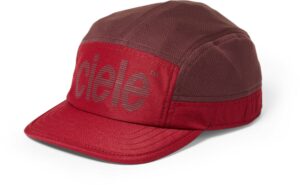Fuelling during the marathon

 Fuelling before and refuelling after a run or race is a bit more simple that keeping up energy levels during a hard effort. You’re offered more options as to what to eat and how you eat it. In the middle of a marathon, options are thinner but can be an important aspect of keeping your legs moving.
Fuelling before and refuelling after a run or race is a bit more simple that keeping up energy levels during a hard effort. You’re offered more options as to what to eat and how you eat it. In the middle of a marathon, options are thinner but can be an important aspect of keeping your legs moving.
For mid-race fuelling, you have a few basic options. Electrolyte drinks are the old guard in race refuelling, but a lot of runners have been moving towards gel packs and chewable gummies. Whatever your fuel of choice, there are a few tips to making sure you don’t bonk.
Firstly, for most shorter distances you likely don’t need mid-run refuelling, aside from maybe a bit of water, if you’ve eaten right in the days leading up to race day. Your body will store enough glycogen to keep you going for about 90 minutes at a high intensity, long enough for most distances aside from a marathon. As the intensity drops, your glycogen stores will keep you running farther before you need a boost. In a half-marathon, your fuelling should be more focused on keeping hydrated.
So, if you’re running a marathon, and possibly a half-marathon, you’ll probably need something along the way to replace the glycogen stores you’ve depleted. After about 30K of running, your body will begin to burn muscle after it’s run out of glycogen.
Your body will burn between 20-50g of carbohydrates during exercise, so replacing those is essential. You will need to look at buying gels or electrolytes that replace a bit less than that. Most gels will have 20-30g of carbohydrates, but double check to make sure you’re buying what you think you are. While you’re buying, also look for gels that will replace sodium and potassium, electrolytes that you will sweat out during exercise.
As for what you plan to fuel with during your run, make sure you’ve tried it before if you’re using it during a race. Like many other parts of your body, the stomach and digestive system is not always perfect and prepared for taking in high amounts of carbs mid-exercise, but it can be trained. Try out a few different gels or chews to see which feel alright. Some may make you feel sick. You don’t want to get midway through a marathon, take one of your gel packs and realize it’s given you a stomach ache and digestive problems. Remember to race how you train, which means using refuelling techniques on long training runs you plan to compete with to prepare your body for race day.
Knowing when to take the gels and chews is also important. Waiting until you have no energy left in your muscles is too late. You may have enough glycogen to last you up to 30K, but it will also take your body some time to digest the fuel. Some of the simple sugars will be absorbed into your blood quickly but will take longer to then, in turn, be absorbed by your muscles, so taking your fuelling in before you hit the wall is a good idea. Think about consuming your gels about 45-60 minutes into the run so that by the time you would have been running low on glycogen they’re being absorbed. This will also help digestion. When your body gets tired it diverts blood away from the stomach and digestive system into the legs doing the running. By taking in gels earlier, your body won’t have diverted as much blood from the stomach, meaning it will be easier to digest while running.
Above all, make sure you have a fuelling option your body is comfortable with. If you can’t keep a gel down it won’t help and if you don’t feel a certain fuelling plan is working try others. There are tons of options available at any running store and one if bound to work for you.

